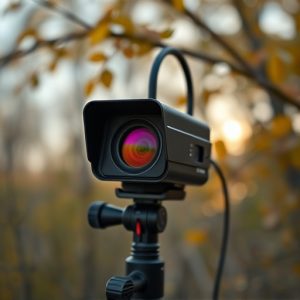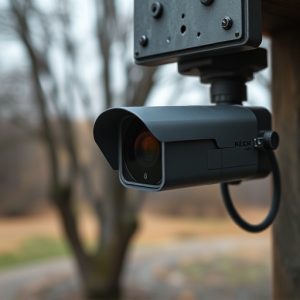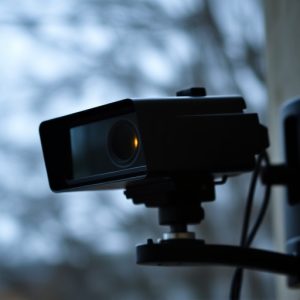Revolutionizing Security: Light Reflection Tech & Wireless Decoys for Spy Camera Detection
In the digital age, hidden spy cameras pose a growing threat to business privacy and data security……..
In the digital age, hidden spy cameras pose a growing threat to business privacy and data security. To combat this, Wireless Decoy Cameras are being deployed as an effective solution. These decoys mimic real camera setups, confusing intruders with a labyrinthine network that deters covert surveillance. The Light Reflection Technique (LRT) enhances this method by detecting miniature cameras through light reflection and algorithms, providing proactive protection for sensitive information in high-risk sectors like finance and corporate headquarters. Wireless Decoy Cameras equipped with AI sensors alert security when unusual behavior is detected, fortifying business security against data breaches and privacy invasions. Case studies demonstrate their success in retail, hotels, and offices, significantly reducing spy camera incidents.
In today’s digital era, spy camera detection is a growing concern for businesses aiming to safeguard sensitive spaces. Traditional methods are often inadequate against advanced surveillance technology. This article explores an innovative solution: the light reflection technique, a revolutionary approach to identify hidden cameras. We delve into the necessity of enhanced security and present wireless decoy cameras as an effective countermeasure for businesses seeking protection. Prepare to discover real-world applications through case studies, highlighting successful spy camera detection using light reflection technology.
- Understanding Spy Camera Detection: The Need for Advanced Security
- Light Reflection Technique: A Revolutionary Approach to Spy Camera Identification
- Wireless Decoy Cameras: An Effective Countermeasure
- How Businesses Can Implement This Technology
- Case Studies: Success Stories of Spy Camera Detection Using Light Reflection
Understanding Spy Camera Detection: The Need for Advanced Security
In today’s digital age, as businesses become increasingly reliant on technology, the threat of surveillance through hidden spy cameras also grows. Understanding and countering this risk is crucial for maintaining a secure work environment. Spy camera detection involves utilizing advanced techniques to identify and neutralize these covert recording devices, ensuring that sensitive information remains confidential. One such technique gaining traction is the use of Wireless Decoy Cameras for Businesses.
These innovative decoy cameras are designed to mimic real camera setups but serve as false leads, luring potential spies away from actual surveillance equipment. By strategically placing these decoys, businesses can create a labyrinthine network that confuses and deters would-be intruders, enhancing overall security measures. This approach is particularly effective in high-risk sectors where data protection is paramount, such as financial institutions, government facilities, and corporate headquarters.
Light Reflection Technique: A Revolutionary Approach to Spy Camera Identification
The Light Reflection Technique (LRT) is a groundbreaking method in spy camera detection, offering businesses an advanced solution to identify hidden surveillance devices. This innovative approach leverages light reflection and sophisticated algorithms to uncover wireless decoy cameras that may be covertly placed within commercial spaces. By emitting specific light patterns and analyzing the reflected signals, LRT enables security professionals to pinpoint the location of these miniature cameras, ensuring a comprehensive sweep of potential surveillance threats.
With the increasing prevalence of hidden camera technology, businesses face growing challenges in maintaining privacy and data security. The LRT provides a proactive measure against this burgeoning issue, allowing companies to take control of their safety by detecting and neutralizing wireless decoy cameras effectively. This cutting-edge technique is a game-changer for industries seeking robust protection against covert surveillance.
Wireless Decoy Cameras: An Effective Countermeasure
Wireless decoy cameras have emerged as a powerful countermeasure in the ongoing battle against covert surveillance. These innovative devices mimic real cameras but are designed to deter and detect potential spies, offering businesses an extra layer of security. By strategically placing wireless decoys across premises, companies can create a false sense of monitoring, making it difficult for unauthorized individuals to operate hidden cameras without detection.
The effectiveness lies in their ability to reflect light, mimicking the natural movement and reflections that real cameras capture. These decoy devices are often equipped with advanced sensors and artificial intelligence, allowing them to detect unusual behavior or any attempt to set up a spy camera. When triggered, they can send alerts to security personnel, providing valuable time to investigate and prevent data breaches or privacy invasions. This technique is especially beneficial for businesses dealing with sensitive information, ensuring their operations remain secure in today’s digital world.
How Businesses Can Implement This Technology
Businesses can leverage the spy camera detection light reflection technique by integrating wireless decoy cameras into their security systems. These decoy cameras, strategically placed to mimic real surveillance equipment, exploit the principles of light reflection to expose hidden or illegally installed cameras. By reflecting ambient light in unexpected ways, they create visual disruptions that alert security personnel to potential spying activities.
Implementing this technology involves a combination of placement and advanced sensor capabilities. Wireless decoy cameras can be discreetly positioned at various angles and locations within a facility, ensuring maximum coverage. They are equipped with sensitive sensors that detect even subtle changes in light reflection, enabling them to trigger alerts when an actual spy camera is attempting to capture data. This proactive approach not only safeguards sensitive business information but also serves as a powerful deterrent against surveillance attempts.
Case Studies: Success Stories of Spy Camera Detection Using Light Reflection
In recent years, light reflection techniques have emerged as a powerful tool in the battle against covert surveillance, particularly in commercial settings. Case studies across various industries have demonstrated the effectiveness of wireless decoy cameras for businesses seeking to safeguard their operations from hidden spies. For example, retail stores have deployed these innovative devices to deter would-be intruders from setting up secret camera systems, thereby protecting sensitive product information and customer privacy.
Hotels and offices have also found success in employing light reflection technology. By strategically placing decoy cameras that mimic real security equipment, these establishments have successfully fooled potential spies, who often target these locations for illegal filming. The reflective surfaces used in these wireless decoy cameras reflect light in unpredictable ways, making it nearly impossible for malicious actors to capture clear images or videos without being detected. This simple yet ingenious approach has significantly reduced the occurrence of spy camera-related incidents, offering businesses a cost-effective and efficient solution to maintain their security posture.
The detection and prevention of hidden spy cameras have become paramount in ensuring privacy and security, especially in commercial settings. The light reflection technique offers a cutting-edge solution, allowing businesses to proactively identify and mitigate risks associated with covert surveillance devices. By integrating wireless decoy cameras as part of their security strategies, companies can maintain a proactive approach to protecting sensitive information. This article has highlighted the importance of such innovative technology, providing valuable insights for businesses seeking advanced security measures. With successful case studies in hand, it’s evident that combining light reflection analysis and wireless decoy cameras is a game-changer in spy camera detection.


